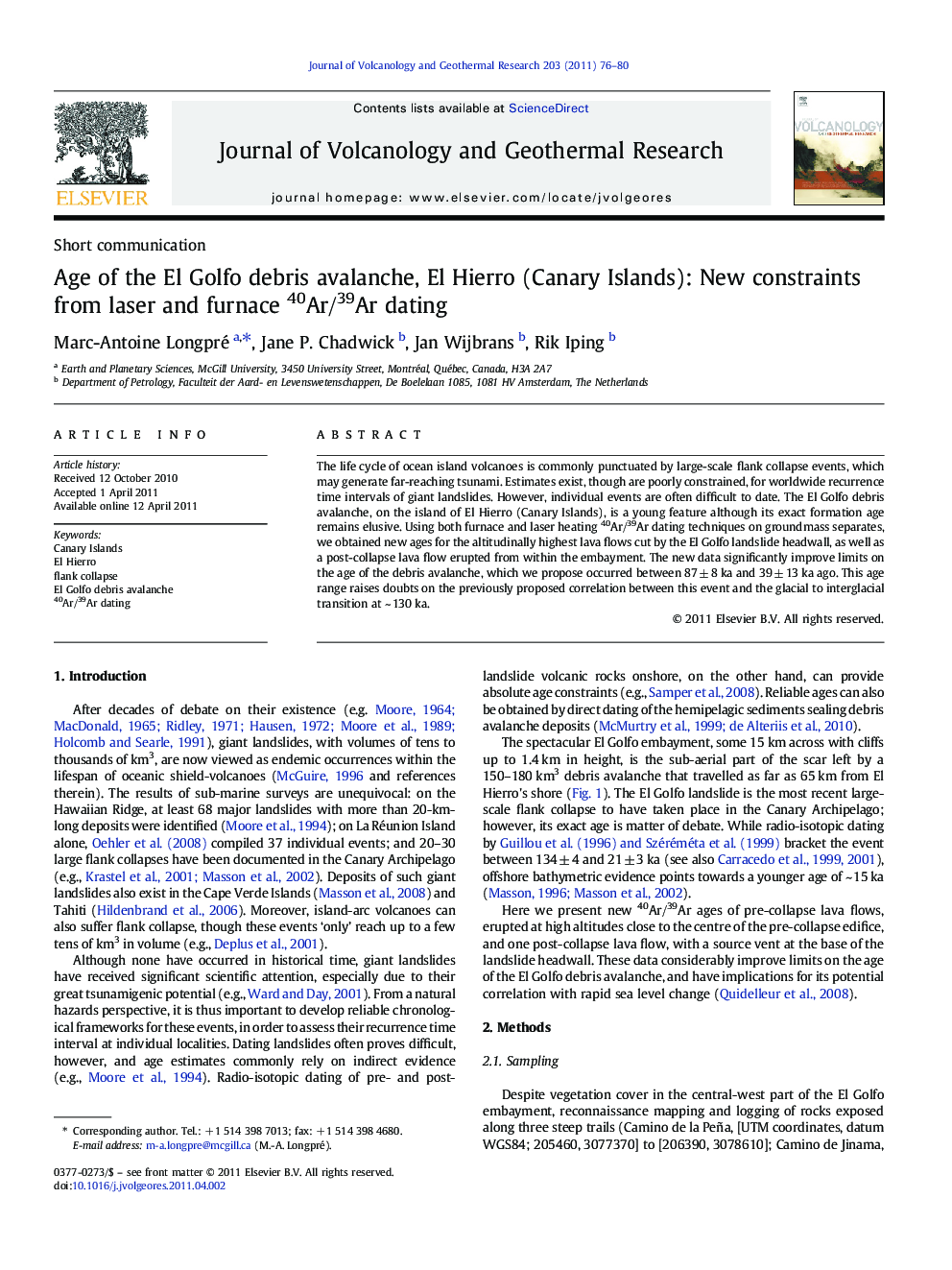| Article ID | Journal | Published Year | Pages | File Type |
|---|---|---|---|---|
| 4714018 | Journal of Volcanology and Geothermal Research | 2011 | 5 Pages |
The life cycle of ocean island volcanoes is commonly punctuated by large-scale flank collapse events, which may generate far-reaching tsunami. Estimates exist, though are poorly constrained, for worldwide recurrence time intervals of giant landslides. However, individual events are often difficult to date. The El Golfo debris avalanche, on the island of El Hierro (Canary Islands), is a young feature although its exact formation age remains elusive. Using both furnace and laser heating 40Ar/39Ar dating techniques on groundmass separates, we obtained new ages for the altitudinally highest lava flows cut by the El Golfo landslide headwall, as well as a post-collapse lava flow erupted from within the embayment. The new data significantly improve limits on the age of the debris avalanche, which we propose occurred between 87 ± 8 ka and 39 ± 13 ka ago. This age range raises doubts on the previously proposed correlation between this event and the glacial to interglacial transition at ~ 130 ka.
► 40Ar/39Ar techniques improve constraints on the age of El Golfo debris avalanche. ► Pre-collapse lava 87 ka old implies debris avalanche younger than previously thought. ► Debris avalanche does not correlate with sea level change at ~ 130 ka.
